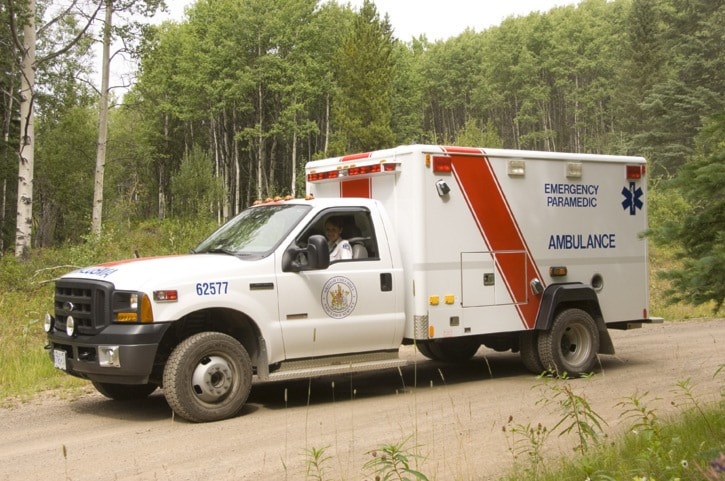Accidents do happen, and when they do, what would happen if there were no first responders available?
Paramedics get paid two dollars an hour to be at the ready to rush out and help people in need of medical attention. Outside of urban centres, it’s very possible a full shift could go by without a call, meaning that two dollars per hour is all there is.
There are employers who can provide the flexibility and pay that will get part-timers scheduled as paramedics as well as time off, or even allow them to leave work when they are needed in the ambulance, but it isn’t the norm.
“We used to have similar models years ago,” Chris Mason from the B.C. Ambulance Service (BCAS) told the Arrow Lakes News, “with the discretion of the employers, there would be no issue if an employee showed up to work late because they were on an emergency call.”
In CUPE agreement with the Village of Nakusp there is a clause that allows employees to absent themselves for an emergency call as long as it isn’t crucial they be at work.
A joint program recently started by BC Ambulance Service and Interior Health in Grand Forks is hoping to ensure paramedics can afford to stay in smaller centres by supplying them with enough steady work and give them sufficient time off so they don’t burn out.
“Lessons learned [in Grand Forks] we can apply to other areas in the province,” Mason suggested.
The BCAS is encouraging people on a local level by offering a course that will enable them to work as a paramedic at the entry level. The Emergency Medical Responder course is being offered in Nakusp through the Justice Institute, and has nine people enrolled. The people from New Denver, Nakusp, Rossland and Kaslo taking the course have a good chance of getting work in their region, as all four stations are currently looking for paramedics.
“We’re always struggling to find people, particularly in the rural remote areas like Nakusp and New Denver,” Mason said, “This truly is a part-time job. With our call volume it’s pretty tough to pay a full-time person”
“It’s a huge challenge,” Mason confirmed, and said that people aren’t encouraged to see working for BCAS as a way to make an income, because it does depend on call volume.
“Years ago there was a lot more of an industrial base,” Mason noted, “and we would hire a lot of industrial first aid attendants who would work in the mill, and as part of their community involvement work part-time ambulance.”
“We don’t have that same industrial base that we once had,” he said, and noted that now people have to work two or three jobs to stay in a smaller community, so the amount of time available for volunteer work is less.
The Integration pilot program in Grand Forks is a partnership with Interior Health that gives a paramedic work as a hospital employee according to their training in order to fill the gap.
“The individual will be working for us and available to go on calls but in the meantime they’ll be working in the facility in Grand Forks,” Mason informed me, “so when a call comes in they’ll be able to leave and away they go.”
